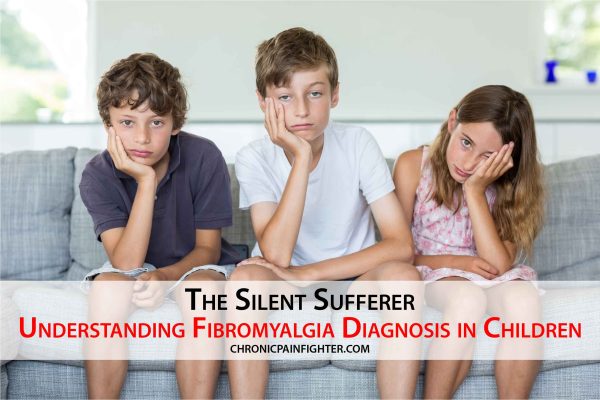Fibromyalgia, a chronic condition that causes widespread musculoskeletal pain, is often referred to as an “invisible illness.” This is because the symptoms are often not visible to the naked eye, leading to misunderstanding and frustration for those living with it.
Beyond the persistent pain, fibromyalgia presents a complex web of symptoms that can significantly impact daily life. This article explores the hidden facets of fibromyalgia, highlighting the invisible symptoms that contribute to the struggle of living with this condition.
The Invisible Pain: Beyond Muscle Aches
While muscle aches and stiffness are common hallmarks of fibromyalgia, the pain extends far beyond a simple muscle ache. Many people with fibromyalgia describe their pain as deep, burning, or even stabbing. It can be constant or fluctuate, and it may be felt in different parts of the body on different days.
Furthermore, the pain is often amplified by physical activity, stress, and even weather changes. A simple task like carrying groceries can trigger a wave of pain that can last for hours.
Fatigue: More Than Just Tiredness
Fatigue in fibromyalgia is not simply a matter of being tired. It’s a profound exhaustion that permeates every aspect of life. Even after a full night’s sleep, individuals with fibromyalgia may wake up feeling drained and unable to function at their best.
This fatigue goes beyond physical exhaustion. It can impact cognitive function, making it difficult to concentrate, remember things, or even form coherent thoughts. This is known as “fibro fog,” a term used to describe the brain fog that can be a significant symptom.
Sleep Disruptions: The Cycle of Pain and Fatigue
Sleep disturbances are another major invisible symptom of fibromyalgia. Many people with fibromyalgia experience difficulties falling asleep, staying asleep, or experiencing restful sleep.
The pain, fatigue, and other symptoms can disrupt sleep patterns, creating a vicious cycle. Lack of sleep further exacerbates the pain and fatigue, making it even harder to function during the day.
The Emotional Toll: Anxiety, Depression, and More
Fibromyalgia’s impact extends beyond physical symptoms. The constant pain, fatigue, and sleep disruptions can take a significant toll on emotional well-being. Many individuals with fibromyalgia experience anxiety, depression, and mood swings.
These emotional symptoms are not simply a reaction to the physical discomfort. The brain’s pain processing centers are often overactive in people with fibromyalgia, leading to heightened sensitivity to pain and a greater susceptibility to emotional distress.
The Invisible Symptoms: A Barrier to Understanding
The invisible nature of fibromyalgia’s symptoms can make it difficult for individuals to receive accurate diagnosis and support. People with fibromyalgia may struggle to convince others of their limitations, facing skepticism and disbelief.
This lack of understanding can lead to feelings of isolation, frustration, and even guilt. It’s crucial for healthcare providers, family, friends, and employers to be informed and understanding of the invisible symptoms of fibromyalgia.
Seeking Diagnosis and Management: A Collaborative Approach
Navigating a diagnosis of fibromyalgia can be challenging. The condition is often diagnosed based on a patient’s history, physical examination, and exclusion of other potential causes.
There is no cure for fibromyalgia, but there are treatments that can help manage the symptoms. Treatment plans often involve a combination of approaches, including:
- Pain management: Over-the-counter pain relievers, prescription medications, physical therapy, and relaxation techniques can help reduce pain.
- Improving sleep: Sleep hygiene measures, cognitive behavioral therapy for insomnia, and sleep medications can improve sleep quality.
- Managing fatigue: Regular exercise, pacing activities, and energy conservation techniques can help manage fatigue.
- Addressing emotional distress: Cognitive behavioral therapy, support groups, and mindfulness techniques can help address anxiety and depression.
Living with Fibromyalgia: Strategies for Coping
Living with fibromyalgia requires a proactive approach to symptom management and self-care. Some strategies that can be helpful include:
- Understanding your triggers: Identifying factors that worsen symptoms, such as stress, lack of sleep, or certain foods, can help you make lifestyle changes.
- Prioritizing rest: Allowing yourself sufficient rest and avoiding overexertion can help prevent flare-ups.
- Pacing activities: Breaking down tasks into smaller, manageable steps can help prevent fatigue.
- Seeking support: Connecting with support groups, therapists, and other individuals with fibromyalgia can provide valuable emotional support and resources.
- Practicing self-compassion: Acknowledging the challenges of living with fibromyalgia and practicing self-kindness can help manage the emotional toll.
Conclusion: Breaking the Silence
The invisible symptoms of fibromyalgia often create a silent struggle for those living with the condition. By shedding light on these hidden facets of fibromyalgia, we can foster understanding, empathy, and support for individuals living with this chronic illness.
With appropriate medical care, self-care strategies, and a supportive community, people with fibromyalgia can navigate the challenges of this condition and find ways to live fulfilling lives.






